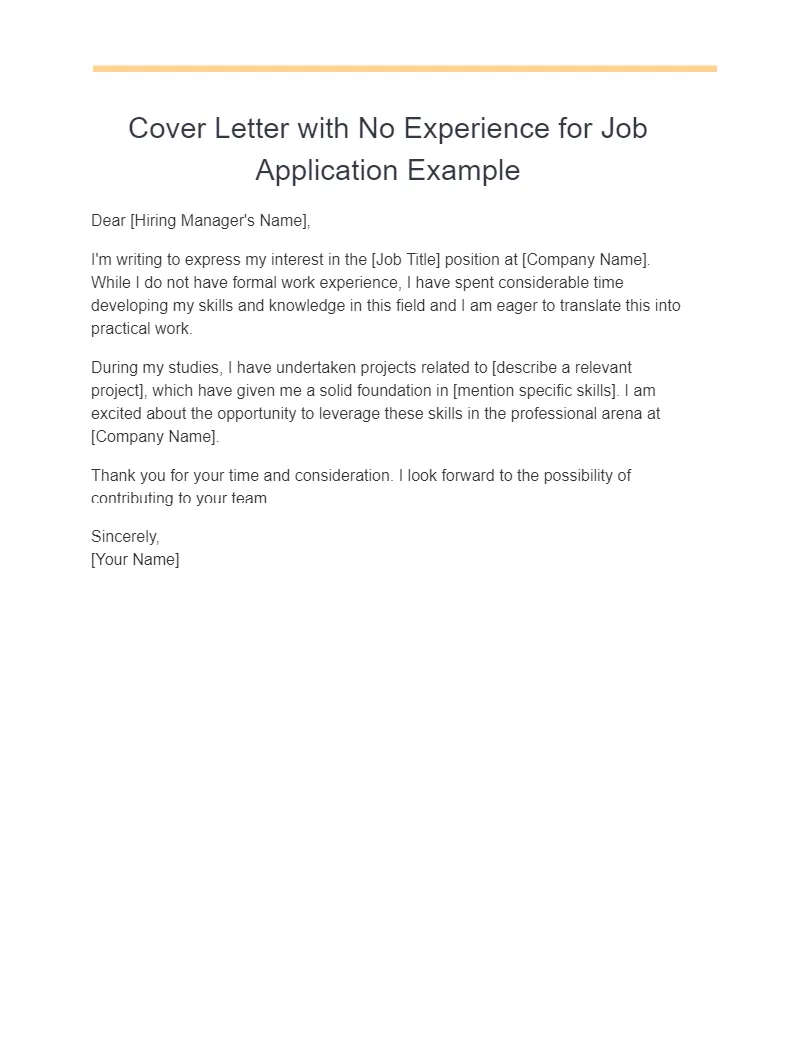Understanding the Importance of a Cover Letter
A cover letter serves as your initial introduction to a potential employer, offering a chance to present yourself beyond the confines of your resume. It’s an opportunity to demonstrate your personality, express your enthusiasm for the position, and highlight how your skills and experiences align with the company’s needs. For students, a well-crafted cover letter is particularly crucial, especially when lacking extensive professional experience. It allows you to showcase your potential, academic achievements, and transferable skills, setting you apart from other applicants and increasing your chances of securing an interview. This document is your chance to shine and persuade the hiring manager that you are a promising candidate, despite your limited work history. Moreover, a cover letter is important because it helps explain any gaps or inconsistencies in your resume.
Why a Cover Letter Matters for Students
As a student with limited or no professional experience, a cover letter becomes even more vital in demonstrating your value to a potential employer. It serves as a platform to highlight your transferable skills, such as communication, problem-solving, and teamwork, acquired through academic projects, extracurricular activities, and volunteer work. A cover letter allows you to elaborate on your passion for the field, your eagerness to learn, and your willingness to contribute to the company’s success. Additionally, it provides an opportunity to address any perceived lack of experience by emphasizing your potential and adaptability. By effectively communicating your strengths and aspirations, you can convince the hiring manager that you are a valuable asset, even without a lengthy work history. A cover letter also shows that you’ve put time and effort into the application process, which can leave a positive impression.
Highlighting Transferable Skills
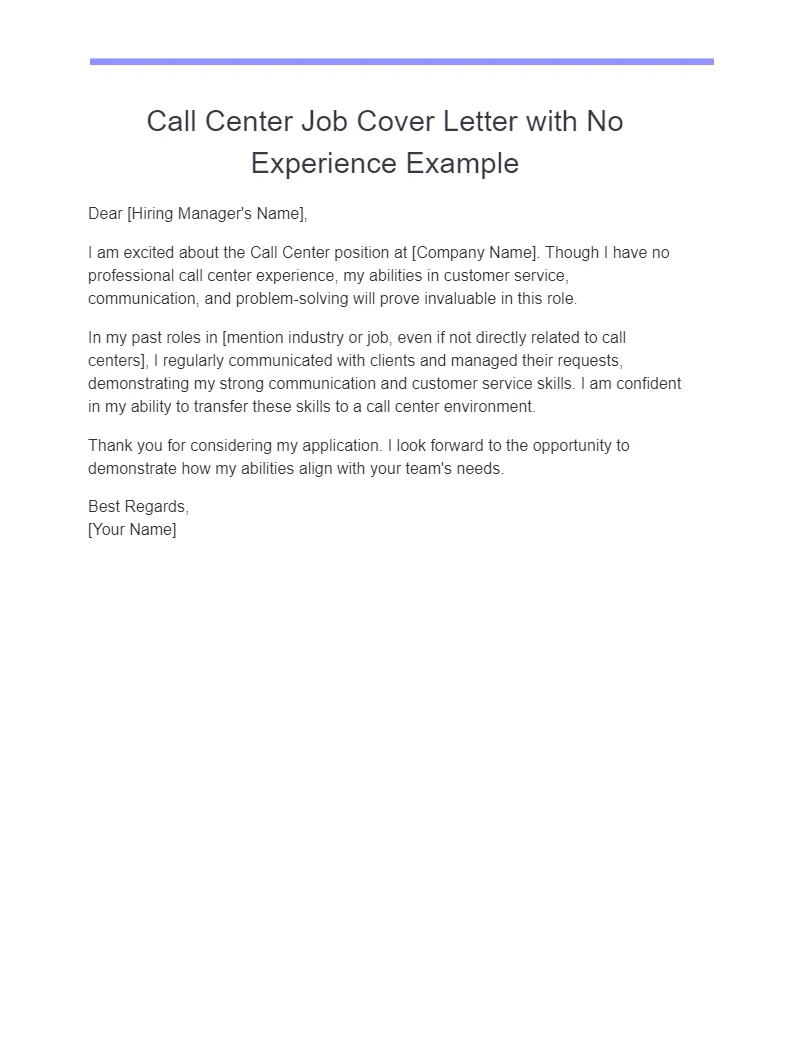
Transferable skills are valuable assets you can leverage in your cover letter, especially when you have limited work experience. These are abilities and competencies that are applicable across various roles and industries, making you a versatile candidate. Examples include communication, teamwork, problem-solving, time management, and leadership. Identify these skills by analyzing your academic projects, extracurricular activities, and volunteer experiences. For example, if you’ve led a student club, highlight your leadership and organizational skills. If you’ve worked on group projects, emphasize your teamwork and communication abilities. If you’ve volunteered, showcase your dedication and ability to work with others. By explicitly mentioning these skills and providing specific examples of how you’ve utilized them, you demonstrate your capabilities and potential to the employer, even without direct work experience. Remember to use the job description to find what skills the employer is looking for.
Identifying and Showcasing Your Skills
Identifying and showcasing your skills in a cover letter requires careful self-assessment and strategic presentation. Start by creating a comprehensive list of your skills, both hard (technical) and soft (interpersonal). Reflect on your academic achievements, extracurricular activities, and any volunteer work to identify relevant skills. For instance, if you’ve excelled in a programming course, highlight your coding skills and any projects you’ve completed. If you’ve participated in a debate club, emphasize your communication and critical thinking abilities. When writing your cover letter, use action verbs to describe your skills and provide specific examples to illustrate them. Instead of simply stating “I have good communication skills,” write “I effectively communicated project updates to team members, resulting in successful project completion.” This approach makes your skills more tangible and demonstrates your ability to apply them in real-world situations. Furthermore, make sure to tailor your skills to the specific requirements of the job description.
Emphasizing Soft Skills
Soft skills are critical for success in any role, and emphasizing them in your cover letter is essential. These skills, which include communication, teamwork, problem-solving, and adaptability, demonstrate your ability to work effectively with others and navigate workplace challenges. When highlighting soft skills, provide concrete examples of how you’ve utilized them. For instance, instead of simply stating “I am a good team player,” describe a situation where you collaborated with others to achieve a common goal. This could involve participating in a group project, leading a student organization, or volunteering on a team. Additionally, highlight your adaptability and willingness to learn, as these qualities are highly valued by employers. Showing that you’re a quick learner and eager to take on new challenges can make a significant positive impression. Tailor your list of soft skills to match the needs of the role you are applying for.
Structuring Your Cover Letter
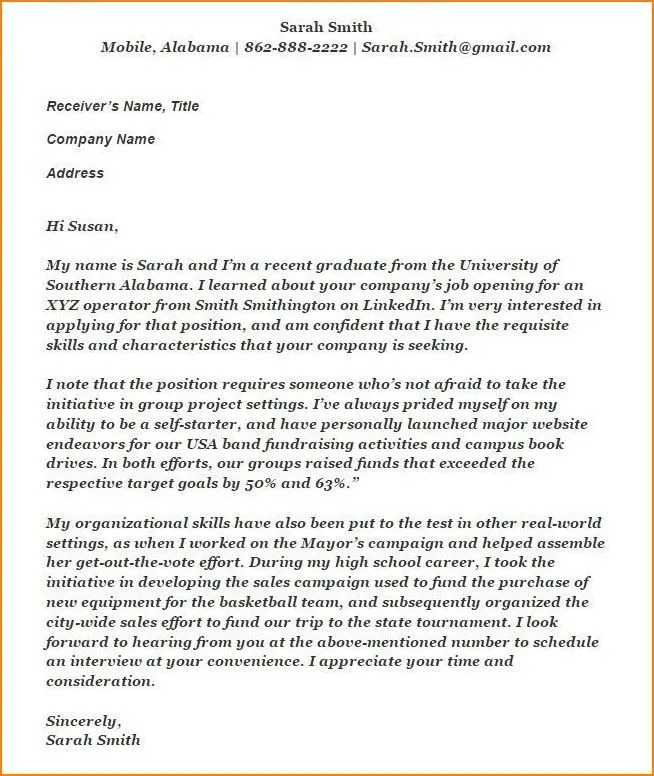
Structuring your cover letter effectively is essential for making a positive impression on potential employers. The overall structure should be clear, concise, and easy to follow. Begin with a professional heading, including your contact information and the date, followed by the employer’s contact details. Then, address the hiring manager directly by name, if possible, to personalize your letter. Structure your letter into distinct paragraphs, each addressing a specific aspect of your candidacy. The opening paragraph should grab the reader’s attention and state your purpose for writing. The body paragraphs should elaborate on your qualifications, highlighting your skills, experiences, and achievements. The closing paragraph should reiterate your interest in the position and include a call to action, such as requesting an interview. Maintain a professional tone throughout, using proper grammar and avoiding jargon. The goal is to make it easy for the reader to quickly grasp your key strengths and understand why you are a good fit for the role.
The Ideal Cover Letter Format
The ideal cover letter format follows a professional and structured approach, ensuring clarity and readability. Begin with your contact information (name, address, phone number, and email) followed by the date. Then, include the employer’s contact information (name, title, company, and address). Address the hiring manager directly by name if possible. The body of the letter should be divided into three to four paragraphs. The first paragraph should state the purpose of your letter and the position you’re applying for. The subsequent paragraphs should highlight your relevant skills, experiences, and achievements, demonstrating how you align with the job requirements. The closing paragraph should reiterate your interest, thank the reader for their time, and include a call to action, such as expressing your availability for an interview. Maintain a professional font like Times New Roman or Arial, use single-spacing, and keep the letter concise (ideally one page). Proofread carefully for grammar, spelling, and punctuation errors before submitting.
The Opening Paragraph: Grabbing Attention
The opening paragraph of your cover letter is your first opportunity to capture the reader’s attention and make a positive impression. Start by clearly stating the position you are applying for and how you learned about the opportunity. Then, immediately express your enthusiasm for the role and the company. Instead of a generic opening, try to personalize your message by referencing something specific about the company or the role that excites you. Briefly mention your key qualifications or skills that align with the job requirements. The goal is to pique the reader’s interest and encourage them to continue reading. For example, instead of saying “I am writing to apply for the position of…”, try “I was thrilled to see the opening for [position name] at [company name], and I am eager to contribute my [relevant skill] to your team.” Keep the opening concise, engaging, and focused on the value you can bring to the company.
The Body Paragraphs: Detailing Your Value
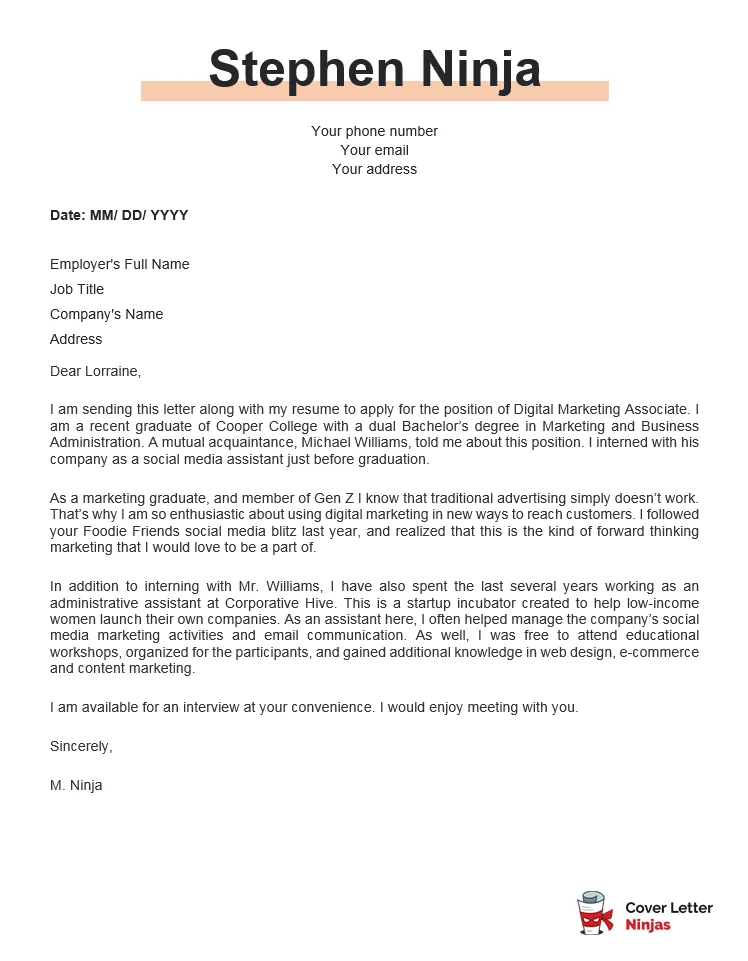
The body paragraphs of your cover letter should provide detailed information about your qualifications and why you’re a good fit for the position. Use this section to elaborate on your skills, experiences, and achievements, demonstrating how they align with the job requirements. Focus on showcasing your transferable skills, such as communication, teamwork, and problem-solving. Back up your claims with specific examples from your academic projects, extracurricular activities, or volunteer work. Quantify your achievements whenever possible to make your accomplishments more impactful. For instance, instead of saying “I improved the efficiency of the process,” write “I improved the efficiency of the process by 15% by implementing [specific action].” Tailor each paragraph to highlight the aspects of your experience most relevant to the specific job. The body paragraphs are your chance to show, not just tell, the employer why you are a strong candidate. Use keywords from the job description throughout your paragraphs.
The Closing Paragraph: Call to Action
The closing paragraph should leave a lasting impression and prompt the hiring manager to take the next step. Reiterate your enthusiasm for the position and the company. Summarize your key qualifications, reinforcing why you are a good fit for the role. Express your interest in an interview and make it easy for the employer to contact you. Clearly state your availability and how they can reach you. Be polite, professional, and concise. For example, you might write, “Thank you for considering my application. I am excited about the opportunity to contribute to [company name] and would welcome the chance to discuss my qualifications further. I am available for an interview at your earliest convenience and can be reached at [phone number] or [email address].” End with a formal closing such as “Sincerely” or “Respectfully,” followed by your name. This final paragraph reinforces your interest and makes it easy for the employer to take action.
Showcasing Relevant Projects and Coursework
Showcasing relevant projects and coursework in your cover letter is an excellent way to demonstrate your practical skills and knowledge, especially when you lack professional experience. Select projects and coursework that align with the job requirements and highlight the skills and experiences that are most relevant to the position. Briefly describe the project’s objectives, your role, and the outcome. Focus on your specific contributions and the skills you utilized. For instance, if you’re applying for a software engineering role, highlight any coding projects, detailing the languages you used, the challenges you overcame, and the results you achieved. If you’re applying for a marketing position, mention any marketing campaigns you worked on, the strategies you employed, and the measurable results. Quantify your achievements whenever possible to demonstrate the impact of your work. This will showcase your proactive approach and the ability to apply your knowledge in a practical setting.
Presenting Academic Achievements Effectively
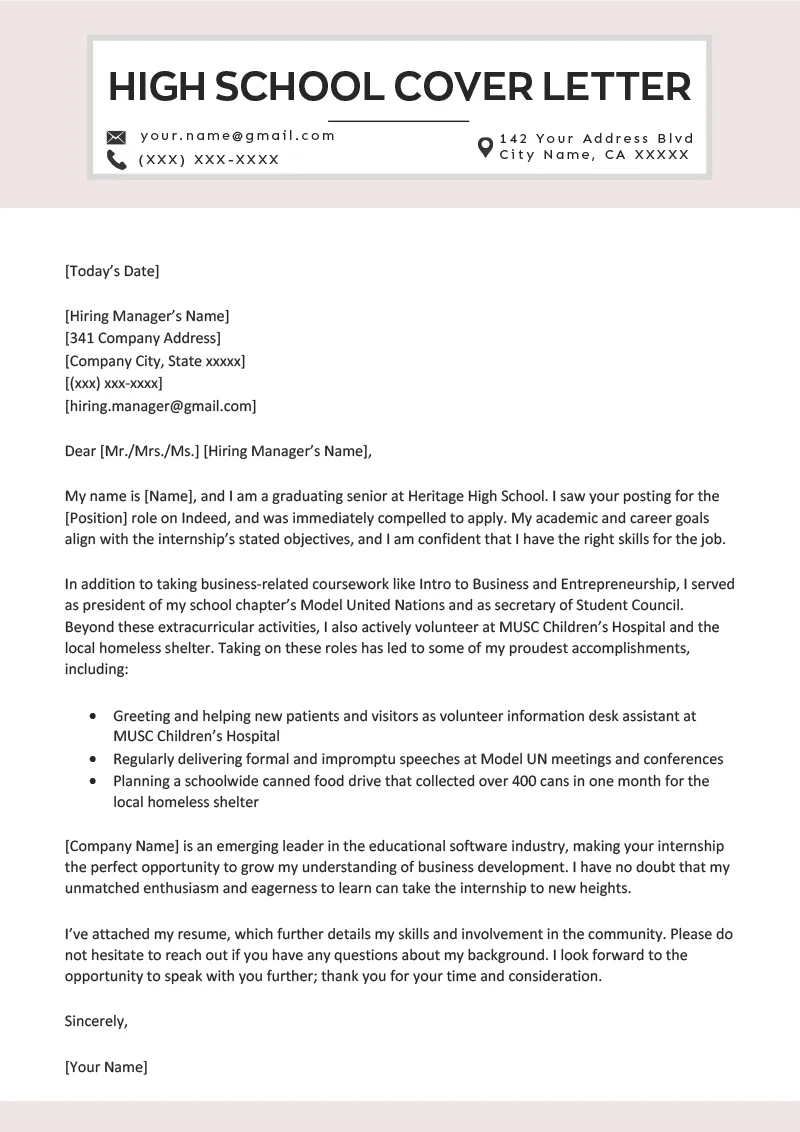
Presenting your academic achievements effectively in your cover letter can significantly enhance your candidacy. Start by highlighting any honors, awards, or scholarships you’ve received, such as Dean’s List, academic excellence awards, or merit-based scholarships. Briefly describe the criteria for the achievement and what it signifies. For instance, if you achieved a high GPA, mention it and briefly explain the significance of your academic performance. If you’ve received a research grant or participated in a prestigious program, highlight your involvement and the skills you gained. Tailor your presentation to the job requirements, focusing on achievements that demonstrate skills and qualities relevant to the position. Quantify your achievements whenever possible. For example, you could write, “Maintained a 3.9 GPA while balancing coursework, extracurriculars, and part-time work.” By showcasing your academic successes, you demonstrate your dedication, work ethic, and ability to excel, making you a more attractive candidate.
Mentioning Volunteer Experience and Extracurriculars
Mentioning volunteer experience and extracurricular activities in your cover letter can provide valuable insights into your personality, skills, and interests. Even without formal work experience, these activities demonstrate your initiative, commitment, and ability to work with others. When describing your volunteer experience, specify the organization, your role, and your responsibilities. Highlight any skills you developed or utilized, such as communication, teamwork, or problem-solving. Quantify your achievements whenever possible. For instance, instead of saying “I volunteered at a local soup kitchen,” write “I volunteered at a local soup kitchen, serving over 50 meals per week and coordinating volunteer schedules.” Similarly, when discussing extracurricular activities, emphasize your leadership roles, the skills you gained, and the contributions you made. For example, if you were the treasurer of a student club, highlight your financial management skills and any successful fundraising efforts. These experiences provide context to your skills.
Tailoring Your Cover Letter to Each Application
Tailoring your cover letter to each application is crucial for demonstrating your genuine interest and suitability for the specific role. Generic cover letters are easily recognized and often dismissed. Instead, customize your letter to align with the job description and the company’s values. Begin by researching the company and the specific requirements of the role. Analyze the job description to identify the key skills and qualifications the employer is seeking. Then, tailor your cover letter to highlight your relevant experiences, skills, and achievements, emphasizing how you meet those requirements. Use keywords from the job description throughout your letter to demonstrate that you understand the role and its demands. Personalize your letter by referencing specific aspects of the company that appeal to you or mentioning how your skills align with their mission or values. By taking the time to tailor your cover letter, you demonstrate your genuine interest and increase your chances of landing an interview.
Researching the Company and the Role
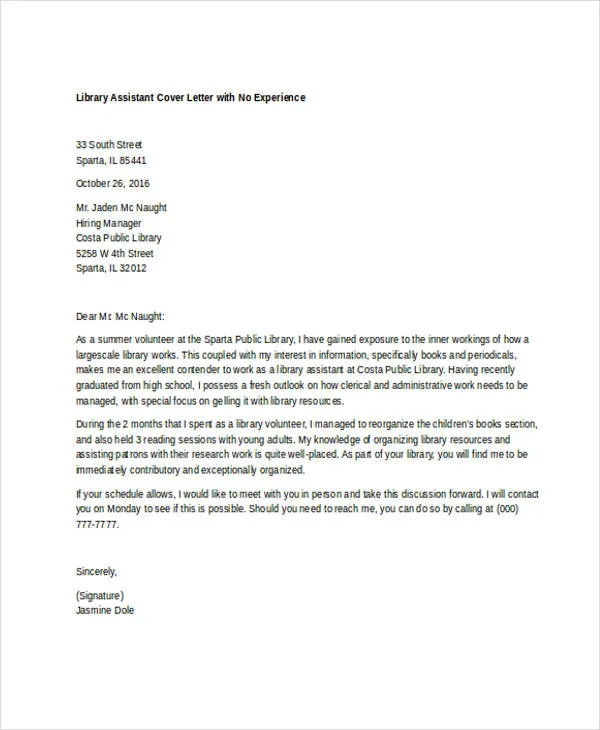
Researching the company and the role before writing your cover letter is an essential step in the application process. It demonstrates your interest and allows you to tailor your letter to the specific requirements and values of the organization. Start by visiting the company’s website to learn about its mission, values, products or services, and recent news. Explore the “About Us” or “Careers” sections to gain insights into the company culture and employee expectations. Next, carefully analyze the job description, paying attention to the key skills, qualifications, and responsibilities. Use this information to identify the most relevant experiences and skills to highlight in your cover letter. Consider researching the hiring manager or team to personalize your letter further. By understanding the company and the role, you can craft a cover letter that effectively demonstrates how you can contribute to their success and shows that you are not just sending out generic applications. This level of preparation shows that you are serious about the opportunity.
Personalizing Your Cover Letter
Personalizing your cover letter is key to making a strong impression and standing out from other applicants. Avoid using generic templates and instead tailor your letter to the specific company and role. Address the hiring manager by name if possible; otherwise, use a professional greeting. Show that you’ve researched the company and understand its mission, values, and products or services. Mention specific reasons why you’re interested in working for the company, such as their innovative work, company culture, or contributions to the community. Relate your skills and experiences to the job requirements, using the keywords from the job description to demonstrate your understanding of the role. Quantify your achievements whenever possible and provide concrete examples to illustrate your skills. By personalizing your cover letter, you demonstrate your genuine interest and make a more compelling case for your candidacy. Doing so shows that you have put time into the process, and this can create a great impression.
Proofreading and Editing Your Cover Letter
Proofreading and editing your cover letter is a crucial step in ensuring its professionalism and effectiveness. A cover letter riddled with errors can create a negative impression and undermine your credibility. Before submitting your letter, carefully proofread it for any grammatical errors, spelling mistakes, punctuation errors, and typos. Check for inconsistencies in formatting, such as font size, spacing, and alignment. Ensure that your sentences are clear, concise, and well-structured. Consider reading your letter aloud to catch any awkward phrasing or sentences that don’t flow smoothly. It’s also helpful to have someone else review your cover letter. A fresh pair of eyes can often identify errors that you may have missed. Using tools like Grammarly or other online proofreading services can also be beneficial. This is a basic step that significantly increases the odds of landing a job.
Checking for Grammar and Spelling Errors
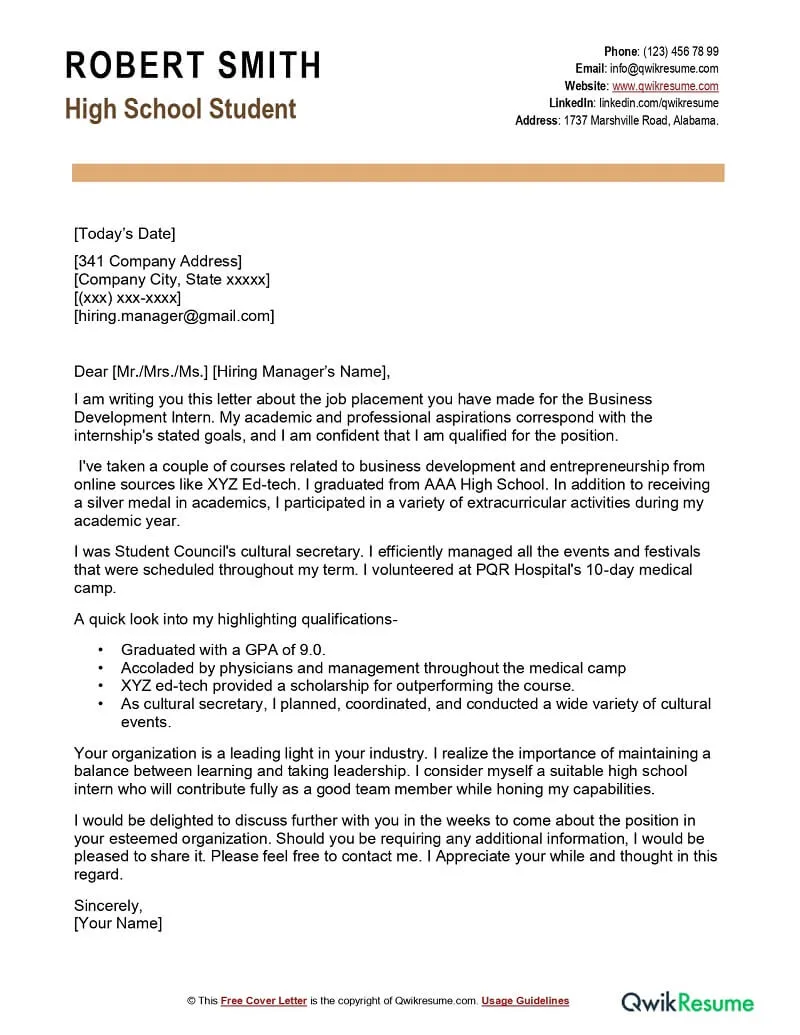
Checking for grammar and spelling errors is a non-negotiable step in the cover letter writing process. Errors in these areas can damage your credibility and professionalism, potentially costing you the opportunity. Start by carefully reviewing your letter for any grammatical mistakes, such as incorrect verb tenses, subject-verb agreement issues, or misplaced modifiers. Next, thoroughly check for spelling errors, paying attention to words that are commonly misspelled or easily confused, such as “there,” “their,” and “they’re.” Utilize a spell-checker, but don’t rely on it exclusively. Proofread your letter multiple times, as spell-checkers may not catch every error. It’s a good idea to read your letter backwards, focusing on individual words and sentences. This can help you identify errors you might miss when reading for content and meaning. When you proofread, be sure to go slow and carefully. Use resources like online grammar checkers to help catch errors. A well-written cover letter demonstrates attention to detail.
Seeking Feedback on Your Cover Letter
Seeking feedback on your cover letter from trusted sources is an invaluable step in the application process. Asking for feedback can help you identify areas for improvement and ensure your cover letter effectively communicates your qualifications. Share your cover letter with career counselors, professors, mentors, or friends and family members who have strong writing skills. Provide them with the job description and ask them to assess whether your letter aligns with the requirements. Ask for specific feedback on the clarity, conciseness, grammar, and overall impact of your letter. Be open to constructive criticism and use it to refine your cover letter. Incorporate the feedback you receive and revise your letter accordingly. Seeking feedback demonstrates your willingness to learn and improve, which is a valuable quality in any candidate. Remember that feedback is important, and there are many resources for this, including your school’s career center.
